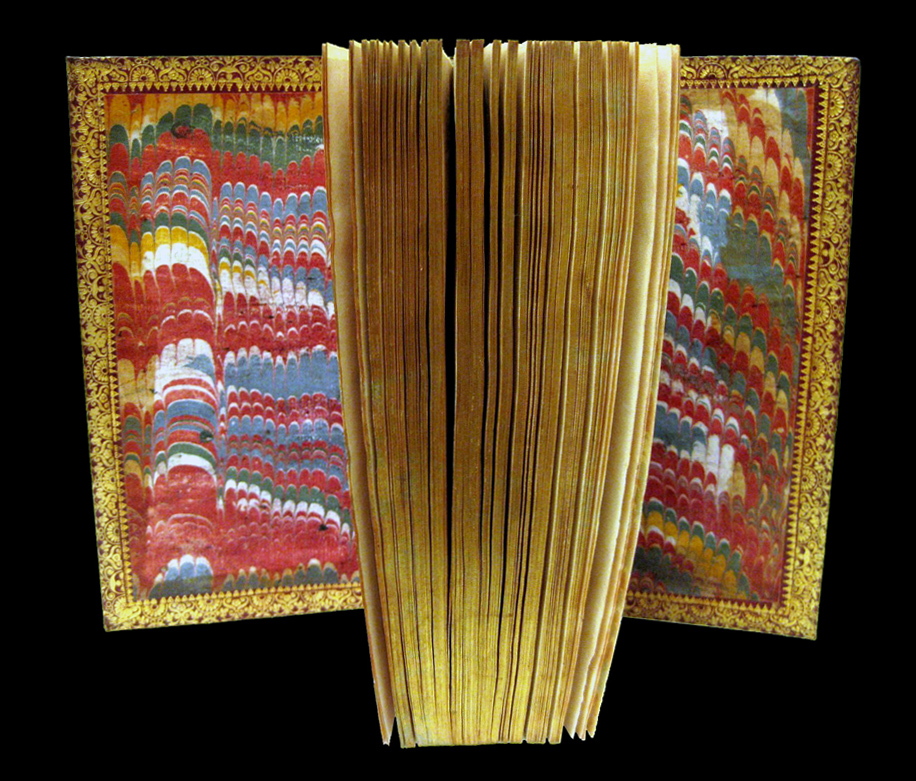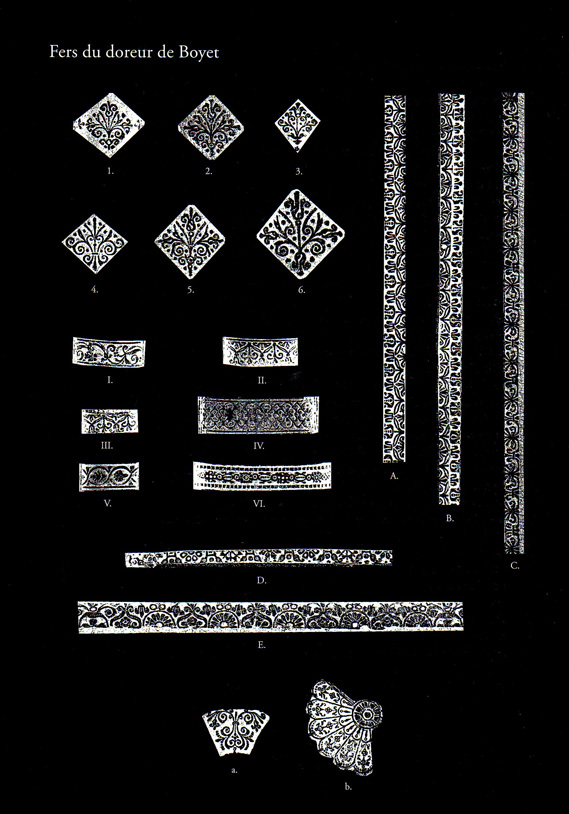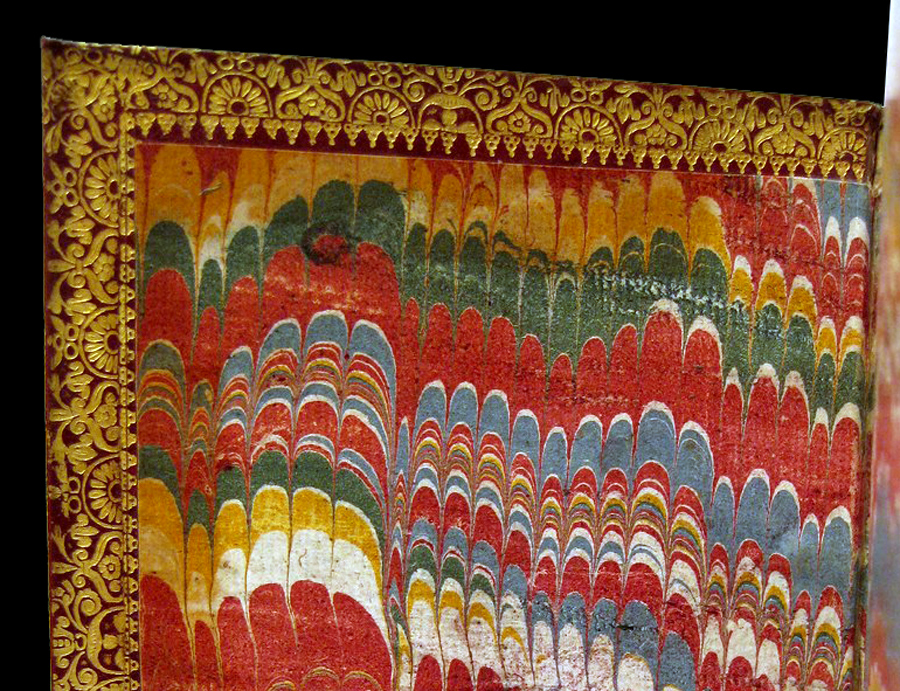I must thank Bertrand Hugonnard-Roche of the Librairie L'amour qui bouquine for sending me these photos of an excellent example of a Jansenist binding by Luc-Antoine Boyet. Descriptions of he term Jansenist binding can be found in any number of bookbinding glossaries and these are often found to contain a direct reference to Boyet:
And it was in the reign of Louis XIV., also, by sheer reaction against the leaden showiness of the fashion set by the king, that there arose the simple style of binding called after Jansen, and adopted by the sect of Port Royal. The Jansenists bound their books soberly, with no gilding whatsoever on the sides, relying on the simple beauty of the leather in which their volumes were clad and decorating only the inside border - the dentelle, as it was called, from its resemblance to delicate lacework. These under decorated books were better bound in a technical sense than those of an earlier day, however much more beautiful the older books were to the eye. The books bound by Boyet, for example, toward the end of the seventeenth century, were more solidly prepared, more carefully sewn, more cautiously covered, than those sent forth from the workshops of his immediate predecessors.
He (Boyet) is generally believed to have covered many books, with what are known as Jansenist bindings. These bindings are without any gilding, or other ornament, on the exterior, with the exception of a blind fillet; and are so called, from the severity of their style, in allusion to the sect of the Jansenists, which had then not long been formed.
While it may be that many of Boyet's bindings were fashioned in this style, they are not easily identified. This type of binding was to become very popular, and the dentelles of Boyet often imitated. Thus finding a genuine Boyet, made even more difficult. It is fortunate then that we have found this authentic example that can serve as a reference. In the enlarged image of the photo shown above we can see clearly the single blind filet framing the boards and each spine compartment as well as defining a area at the bottom of the spine where a palette would normally be applied as a decorative fill. |





